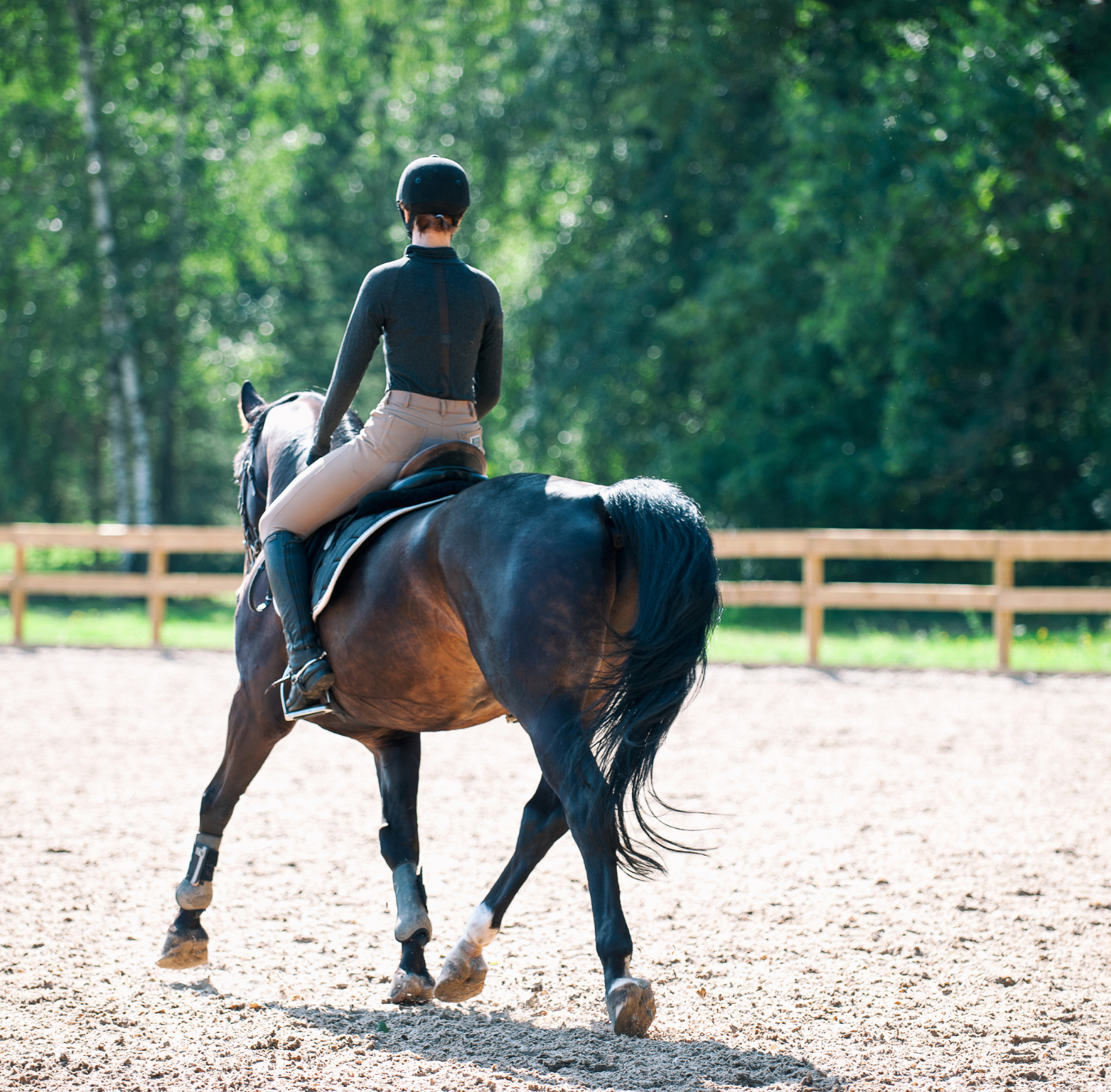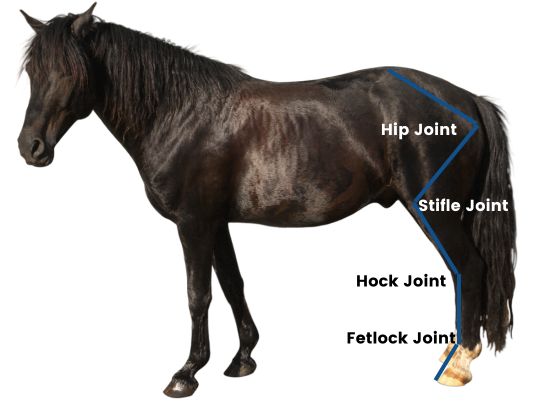
What is a Stifle Injury in Horses?
First things first, if you want to know what a stifle injury in horses is, you should know what the stifle joint is.
Has your horse just been diagnosed with a stifle joint injury?
To help you understand what a stifle injury in horse is, we’ll cover:
- What is a stifle joint in a horse?
- How do horses get a stifle injury?
- Types of stifle injury
- How to treat stifle injuries
- Outlook for stifle injury in horses
What is a stifle joint in a horse?

The stifle joint in a horse includes three bones: femur (thigh bone), patella (knee bone) and tibia (shinbone). In addition, there are three joints: femoropatellar, medial femorotibial, and lateral femorotibial. Sounds complicated. That’s because it is: it’s a complex joint that allows motion in three planes. But do we need to know exactly what it is and how it works or simply what do we do if our horse gets a stifle injury?
How do horses get a stifle injury?
How horses get a stifle injury can vary. A stifle injury is typically caused by repetitive stress, trauma or, more rarely, developmental issues. It’s very similar to the human knee, so the same soft tissue injuries can occur with equine athletes.
Repetitive stress
Repetitive stress from horses that participate in high-level sports, such as show jumping, can lead to injury.
Traumatic injury
A traumatic injury to a horse’s stifle joint can occur from a fall or kick from another horse. Show me an owner who doesn’t always scan their horse all over when coming in from a field shared with other horses…
Developmental issues
In rare cases, a horse may be born with a stifle injury or with a conformation abnormality that makes them more prone to injury.
Types of stifle injury in horses
There are several types of stifle injury in horses, but here we cover the main ones:
Locking stifle
This condition in horses is where the patella (kneecap) becomes stuck in an upward position. This can happen when the medial patellar ligament, which normally holds the patella in place, becomes too tight or inflexible.
Stifle arthritis in horses
There are a number of factors that can contribute to the development of stifle arthritis in horses, including age, genetics, injury, obesity and overuse. Horses that are overworked or ridden on hard surfaces are more likely to develop stifle arthritis. A properly maintained arena surface is essential for maintaining your horse’s soundness.
Meniscal Tears
Meniscal tears are among the most common horse stifle injuries in horses, resulting from trauma or degeneration.
Stifle Ligament Injuries
Injuries to the ligaments within the equine stifle joint cause pain and instability.
Stifle Fractures
Fractures of the bones within the equine stifle joint can be severe and debilitating for horses.
How to treat stifle injuries in horses
How to treat stifle injuries in horses will obviously depend on the type of injury. However, the main advice for most cases is rest. When it comes to vet bills for horses, we immediately think of pound signs. Insurance for horses is vital, not only for help when you get those expensive vet bills but also for public liability.
Anti-inflammatory medication to help reduce pain and swelling may be sufficient for some injuries. However, cruciate and meniscal ligament injuries are more serious and may require surgery.
Outlook for stifle injury in horses
The recovery time for a horse’s stifle joint injuries can vary depending on the severity of the injury, age and activity level of the horse. However, most horses make a full recovery with proper treatment. There are some instances, however, where horses may have permanent lameness or arthritis in the stifle joint.
If you want to know about our advanced arena surfaces, which are essential for maintaining your horse’s soundness, please don’t hesitate to get in touch. Someone from our team will always be happy to help.

